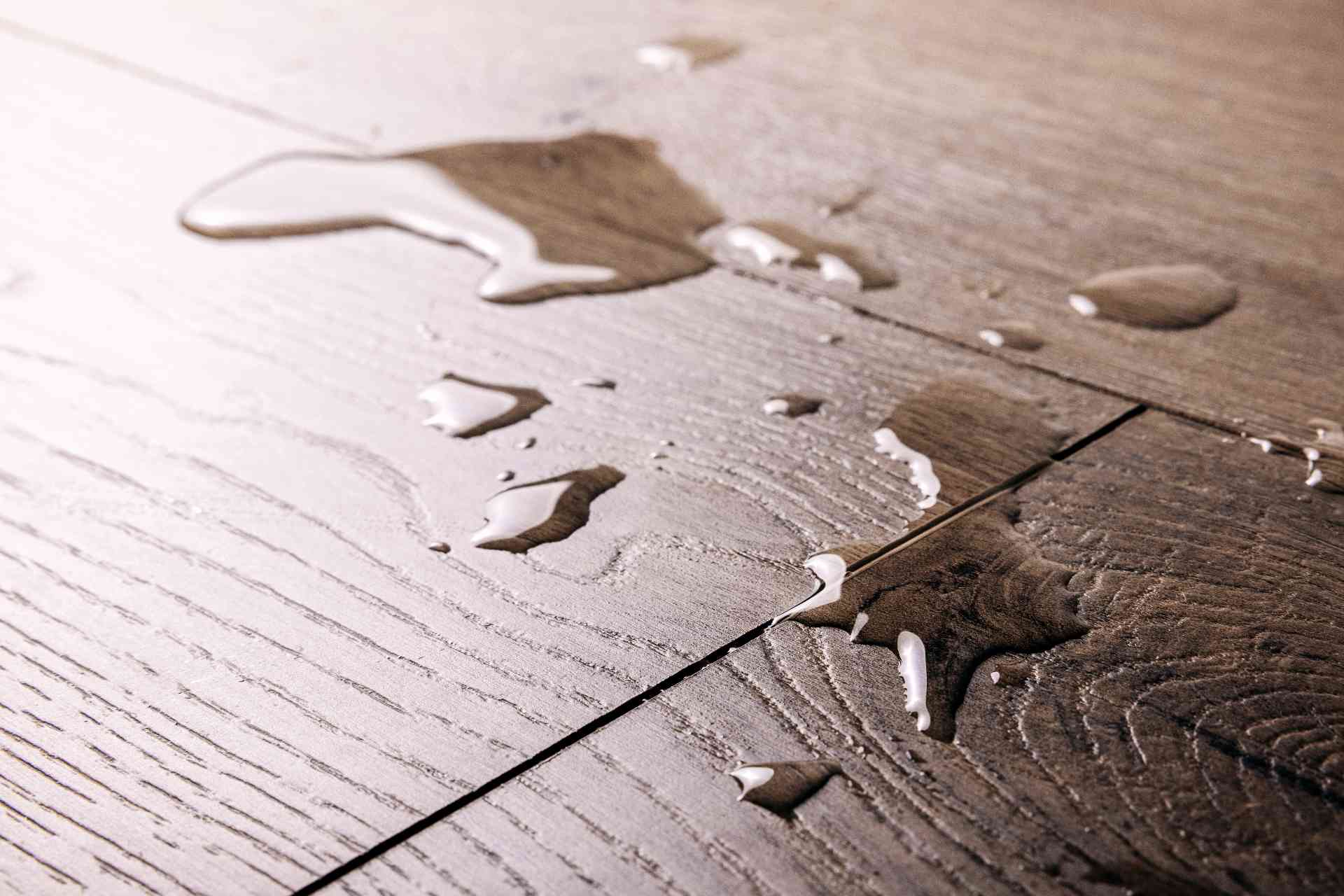Waterproof flooring is essential for areas of the home where spills, splashes, and moisture are common. The materials resist moisture from the surface down to the core, helping prevent mold growth, swelling, warping, and long-term water damage while preserving the appearance and structure of the floor for years.
This comprehensive guide compares the best waterproof flooring options available today, highlights where each material performs best, and helps you make an informed decision for lasting style and protection.
What Makes a Floor Waterproof?
Waterproof flooring is built to stop water from seeping through its surface, seams, or core. It’s made from non-porous materials and designed with tight locking systems or sealed joints that prevent moisture from reaching the subfloor. Thanks to this construction, waterproof floors can handle standing water, spills, and humidity without swelling, peeling, or warping.
What’s the Difference Between Waterproof and Water-Resistant Flooring?
The key difference is in the level of protection. Waterproof flooring can withstand full water exposure for extended periods without damage. It’s completely sealed from top to bottom, making it ideal for high-moisture rooms like bathrooms and basements. Water-resistant flooring, on the other hand, can handle small spills or brief exposure to moisture but will eventually absorb water if left untreated. It’s better suited for rooms where moisture is possible but not constant, such as living rooms or kitchens.
Both waterproof and water-resistant options offer excellent durability and appearance, but the right choice depends on where the flooring will be installed and how much water exposure you expect.
Best Waterproof Flooring Options
| Flooring Type | Waterproof Level | Durability | Lifespan | Slip Resistance | Comfort / Feel | Ease of Installation | Typical Price Range* |
|---|---|---|---|---|---|---|---|
| Tile | 100% waterproof | Extremely durable | 50+ years | Excellent with textured tile | Hard and cool underfoot | Difficult | $5-$10 per sq. ft. |
| Stone or sealed concrete | 100% waterproof (when sealed) | Extremely durable | 50+ years | Good when sealed and textured | Hard and cold underfoot | Difficult | $6-$12 per sq. ft. |
| Luxury vinyl tile | 100% waterproof | Very durable | 20-30 years | Good with textured finish | Warm and comfortable | Easy | $3-$7 per sq. ft. |
| Waterproof laminate flooring | Fully waterproof core | Highly durable | 15-25 years | Moderate | Firm underfoot | Easy | $3-$6 per sq. ft. |
| Waterproof engineered hardwood | Highly water-resistant | Moderately durable | 20-30 years | Fair | Warm and natural underfoot | Moderate | $6-$12 per sq. ft. |
Tile Flooring
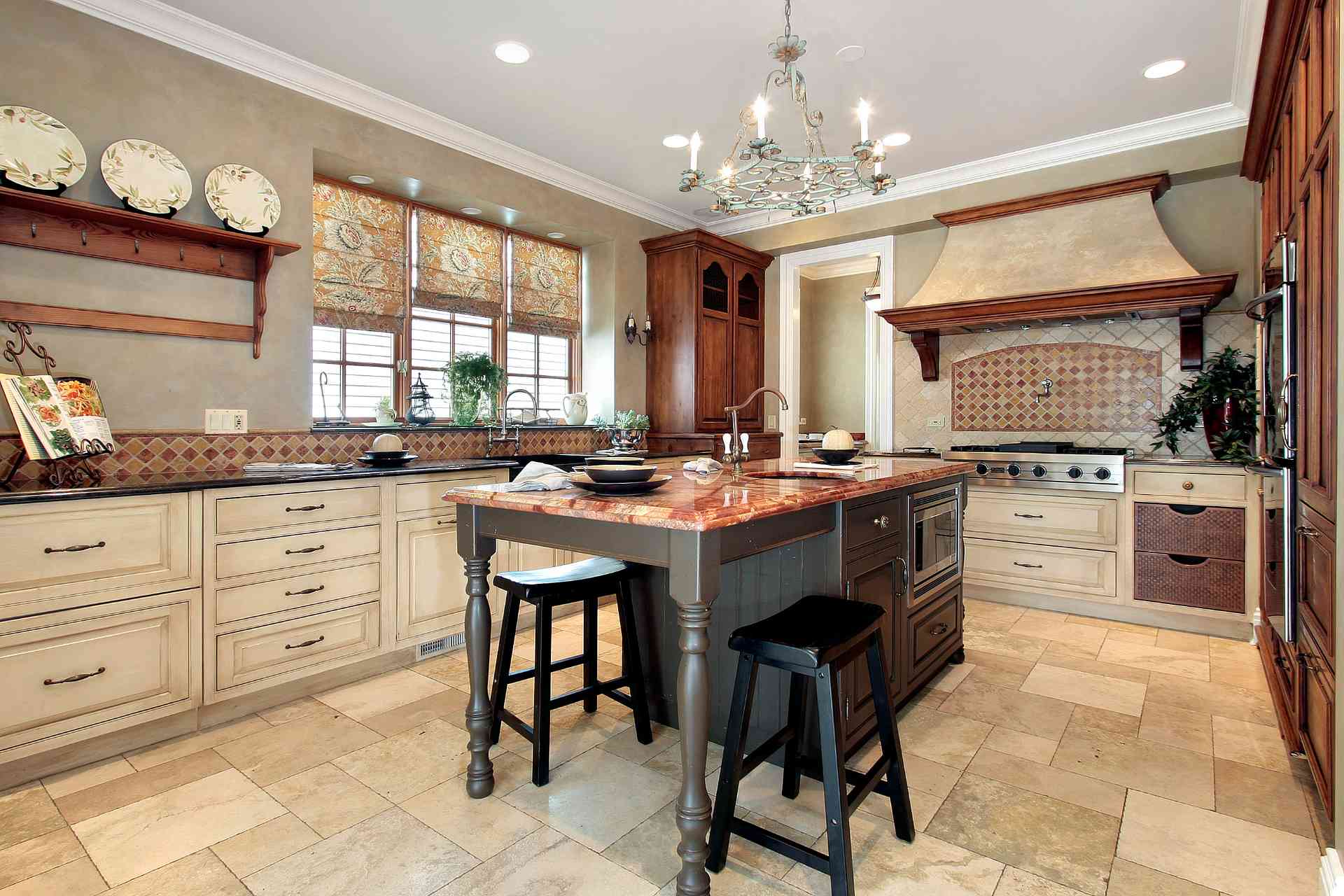
Ceramic and porcelain tile are made from dense, fired clay that naturally resists moisture, making them some of the most waterproof flooring materials available. When installed with properly sealed grout and a waterproof membrane beneath the surface, tile provides excellent protection against water damage, mold, and stains. It’s ideal for high-moisture areas such as bathrooms, kitchens, and laundry rooms, offering slip resistance and the potential to last more than 50 years with minimal upkeep.
While tile is highly durable and easy to clean, it can feel hard and cold underfoot and typically requires professional installation, which adds to the cost. Still, its design flexibility makes it one of the most dependable and visually versatile waterproof flooring options available.
Stone or Sealed Concrete Flooring
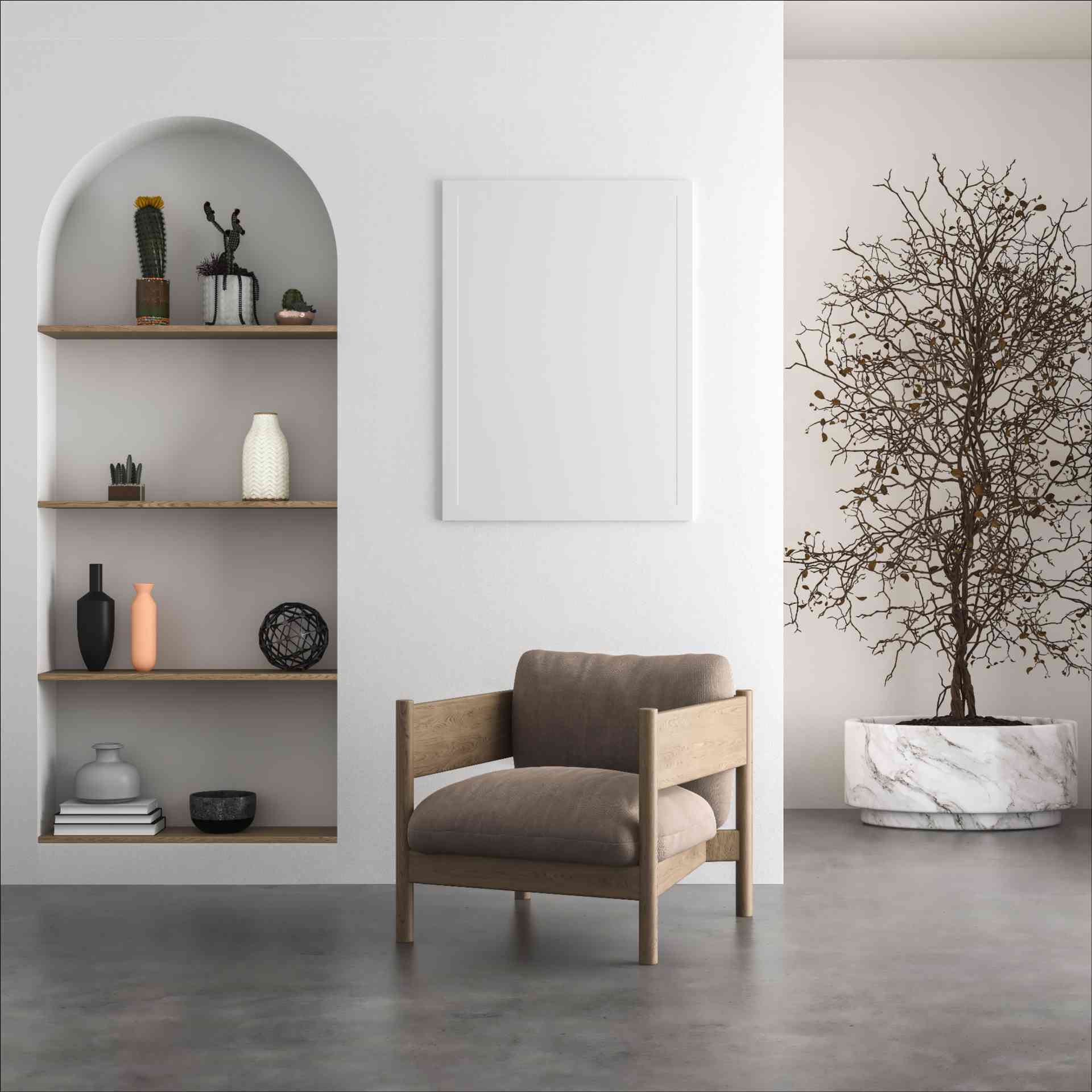
Natural stone, stone tile, and sealed concrete offer some of the strongest waterproof protection and longest lifespans of any flooring material. When properly sealed, surfaces like slate, travertine, granite, or polished concrete become completely water-resistant and exceptionally durable. They’re ideal for entryways, basements, and kitchens where heavy foot traffic or moisture exposure is common. These materials also provide a timeless, high-end aesthetic that can enhance a home’s value and design appeal.
However, concrete and natural stone floors can be cold and hard underfoot, often requiring area rugs or radiant heat for comfort. They’re also heavy and require professional installation, which can increase the upfront cost. With proper sealing and easy maintenance, though, they can easily last 50 years or more, with regular resealing, while maintaining their natural beauty and waterproof integrity.
Luxury Vinyl Flooring
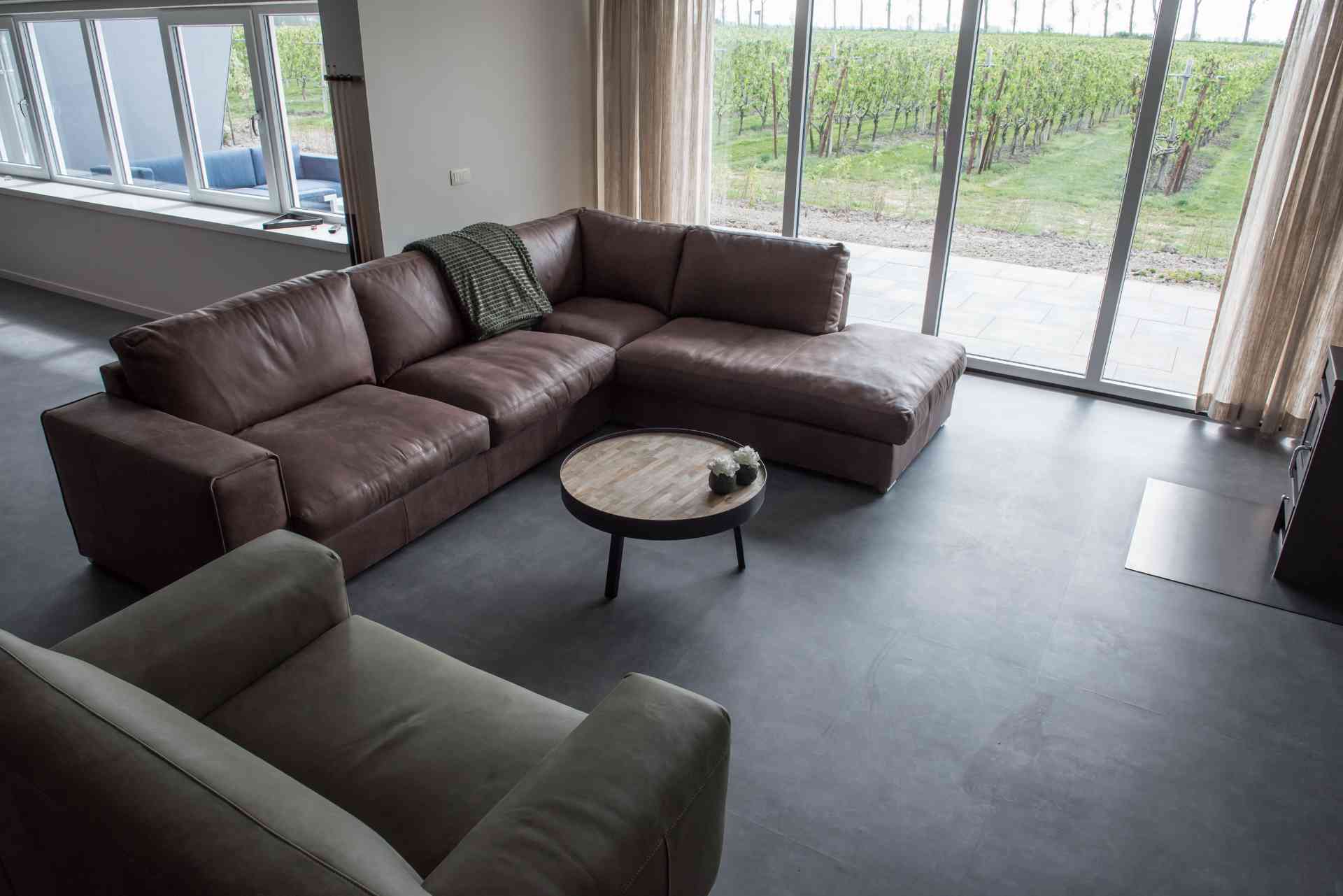
Luxury vinyl plank (LVP) and tile (LVT) are among the most popular waterproof flooring options for modern homes. Made from layered PVC with a protective wear surface, LVP and LVT provide 100% waterproof protection along with realistic wood or stone-look patterns. They resist scratches, dents, and stains while remaining comfortable underfoot, making them a top choice for kitchens, bathrooms, and basements. Their click-lock or glue-down installation systems also make them a great option for DIY projects.
Although highly durable and easy to clean, vinyl flooring can fade under prolonged sunlight and may feel less natural compared to real wood or stone. For homeowners seeking a balance of affordability, comfort, and waterproof performance, LVP and LVT are hard to beat.
Waterproof Laminate Flooring
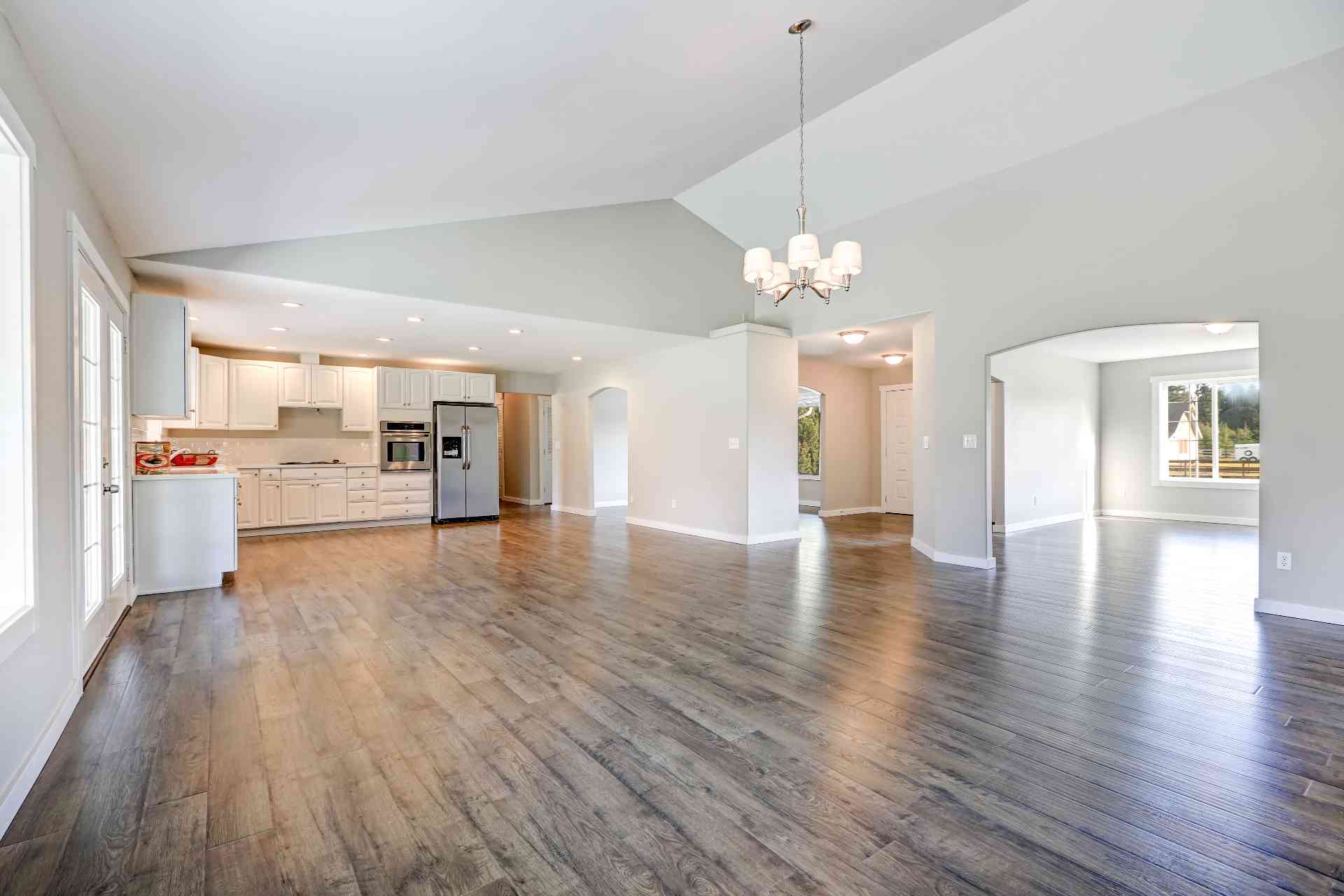
Waterproof laminate flooring combines the look of hardwood with improved moisture resistance. Its dense, sealed core and tight locking system protect against spills and humidity, making it a suitable option for kitchens, hallways, and other moderate-moisture spaces. The surface layer resists scratches and stains, with easy installation thanks to its floating click-lock design.
Although waterproof laminate can handle everyday spills, it’s not ideal for areas with standing water or constant moisture, such as bathrooms or basements. It also feels firmer underfoot than vinyl and cannot be refinished once damaged. However, it remains an affordable and durable option for households wanting a wood-like appearance with added protection against moisture.
Waterproof Engineered Hardwood
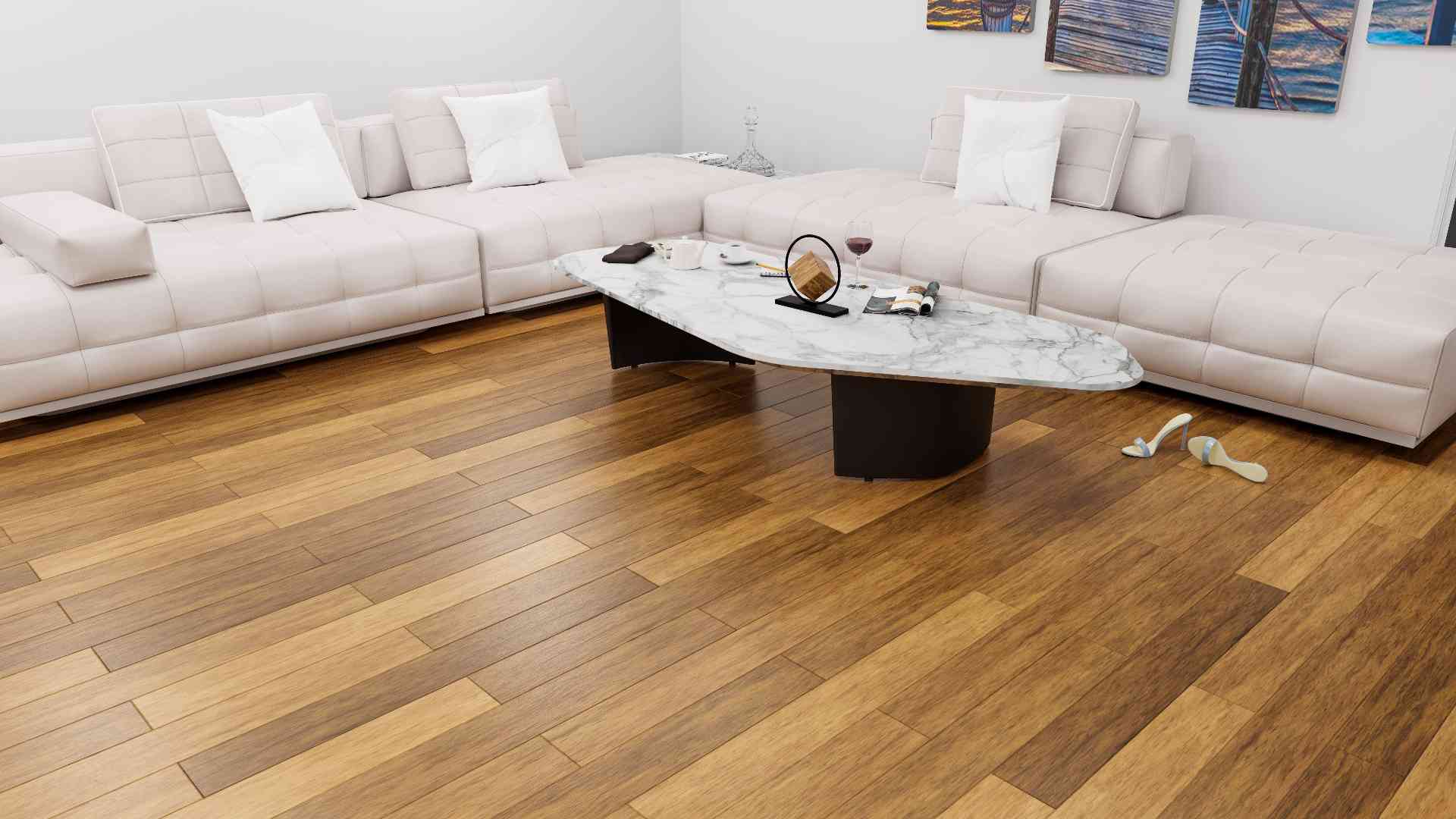
Waterproof engineered hardwood offers the beauty of real wood with better protection against moisture than traditional hardwood. It’s built with a genuine wood veneer bonded to a waterproof core, giving it greater stability in areas prone to humidity or occasional spills. This makes it a stylish option for living rooms, dining areas, and open-concept spaces where homeowners want the warmth of wood without the high risk of water damage.
However, even the best waterproof engineered hardwood is water-resistant rather than completely waterproof, so it’s not suited for bathrooms or basements. It also requires careful maintenance to prevent surface damage and cannot withstand prolonged standing water. Still, for those who value authenticity and design, it’s a premium choice that balances natural beauty with enhanced moisture protection.
Water-Resistant Flooring Alternatives
Water-resistant flooring provides a strong balance between appearance, comfort, and moderate protection from moisture. These materials can handle light spills or humidity when maintained properly, making them excellent choices for living rooms, bedrooms, hallways, and other low-moisture areas of the home.
- Standard laminate flooring has a durable wear layer that protects against everyday spills and surface moisture. While it looks like hardwood, it’s best for areas where water exposure is infrequent.
- Engineered hardwood features a real wood veneer over a stable core, offering more resistance to humidity and temperature changes than solid hardwood while keeping a natural look.
- Cork flooring is naturally moisture-resistant and provides a soft, quiet surface underfoot. With proper sealing, it can work well in living spaces or offices.
- Bamboo flooring, especially strand-woven or sealed varieties, resists moisture better than traditional hardwood and offers a modern, eco-friendly aesthetic.
- Linoleum flooring is made from natural materials like linseed oil and wood flour. It resists moisture when sealed and provides a warm, resilient feel underfoot.
However, it’s important to remember that “water resistance” is not the same as “waterproof.” Extended or repeated contact with water can still cause swelling, staining, or warping. For rooms that experience only minor moisture exposure, though, these options offer excellent durability and design versatility at a lower cost.
Which Rooms Need Waterproof Flooring?
Not every room in the house faces the same level of moisture exposure, so choosing the right flooring depends on how much water each area typically encounters. Spaces like bathrooms, laundry rooms, and basements demand full waterproof protection, while bedrooms and living rooms can perform well with water-resistant or traditional flooring. The table below outlines which areas benefit most from waterproof flooring, the level of protection required, and the best materials for each space.
| Room | Waterproofing Needs | Recommended Materials | Flooring to Avoid | Notes / Considerations |
|---|---|---|---|---|
| Bathroom | Constant moisture, frequent splashes | Tile (ceramic or porcelain), LVP/LVT, sealed stone | Solid hardwood, standard laminate | Prioritize non-slip textures and waterproof grout sealing. |
| Laundry room | High risk of leaks and humidity | Tile, LVP/LVT, waterproof laminate | Engineered hardwood, carpet | Choose materials that resist both standing water and humidity. |
| Kitchen | Moderate moisture and frequent spills | LVP/LVT, waterproof laminate, tile | Solid hardwood | Opt for easy-clean surfaces and tight seams to prevent seepage. |
| Basement | Persistent humidity, potential water intrusion | Sealed concrete, LVP/LVT, tile | Wood flooring of any kind | Waterproof underlayment and vapor barriers are essential. |
| Entryway/ mudroom | High foot traffic, tracked-in moisture | Tile, sealed stone, LVP/LVT | Carpet, standard laminate | Look for durable, slip-resistant finishes. |
| Living room/ family room | Low moisture exposure | Engineered hardwood, cork, standard laminate | Carpet in damp climates | Water-resistant materials add peace of mind without sacrificing comfort. |
| Bedroom | Minimal moisture exposure | Engineered hardwood, cork, bamboo, linoleum | Tile, concrete | Comfort and warmth take priority over full waterproofing. |
| Dining room | Occasional spills | Engineered hardwood, water-resistant laminate | Solid hardwood in humid regions | Combine moisture resistance with design continuity from adjacent rooms. |
Factors to Consider When Choosing Waterproof Flooring
The best waterproof flooring depends on more than just its ability to resist water. Durability, maintenance, comfort, and budget all affect how well a floor performs in daily use. Before making a decision, consider how each option fits the needs of your space and lifestyle.
- Moisture exposure: Estimate how much water the floor will encounter. Bathrooms, basements, and laundry rooms are frequently damp and more likely to have standing water, while living areas and bedrooms tend to stay drier.
- Durability and wear resistance: Floors in busy households must handle heavy foot traffic, pets, and furniture. Tile, LVP, and waterproof laminate are ideal for long-term strength.
- Slip resistance: Especially important in wet areas like bathrooms, kitchens, and entryways. Choose tile or vinyl with textured or matte finishes to reduce slipping hazards.
- Comfort and warmth: Hard surfaces like tile and concrete can feel cold, while vinyl and engineered hardwood offer more comfort underfoot. Underlayment or radiant heat can add warmth.
- Maintenance requirements: Some floors, such as natural stone, need periodic sealing, while others, like vinyl, only require sweeping and mopping. Choose based on your maintenance preferences.
- Style and aesthetic: Flooring sets the tone for a room. Wood-look vinyl and engineered hardwood create warmth and texture, while tile and stone provide a timeless, elegant appearance.
- Installation complexity: DIY-friendly click-lock systems are quicker to install, whereas tile and stone require professional expertise for proper waterproofing and finish quality.
- Budget: Compare both material and installation costs. LVP and laminate are affordable options, while engineered hardwood and stone fall at the higher end of the price range.
Find the Best Waterproof Flooring for Your Home
Choosing the right waterproof flooring comes down to balancing style, long-lasting performance, and practicality. Tile, vinyl, laminate, and engineered hardwood all offer different advantages depending on your space, moisture levels, and budget. Builders Interiors carries a wide selection of waterproof and water-resistant options to help you protect your home while achieving the look you want.
If you’re upgrading your floors or remodeling, our design experts can guide you through the best materials and style options for every room of your home. Seattle homeowners can schedule a free consultation with Builders Interiors to explore samples, compare finishes, and find flooring that fits both your style and lifestyle needs.


